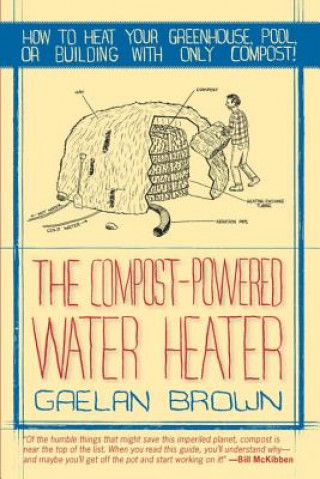Compost water heater
Everything is falling apart! Why don't we heat some water?
Every experienced gardeners has in the garden compost, where it stores the plant surplus from the garden. In addition to the quality of humus, however we can from the compost pile to get even thermal energy. The genius of the nature is incredible, and the ability to handymen inexhaustible. Let's see how you drowning compost.
Compost is scrum biological detritus (dead plants and animals) that like to eat the microorganisms. You need certain conditions to thrive, proliferated, and by extending the content of the compost on the humus. The microorganisms in the compost of your activities produce large amounts of thermal energy. Here we will try to take advantage of.
Correctly based compost is able to maintain a temperature of 50 to 65°C, other sources report up to 70°C.... It is the perfect temperature for domestic hot water (DHW). Even in winter, compost is capable of this temperature to keep.
How to do it
When setting up the compost pile to the inside of the turn of the hose, or the folds of the pipe, which will flow through the water to heat up. We can curl up hose to easy flat spiral, or create a rising thread, create a grid of pipes Spiral gradually obsype compost.
It must be remembered that the hoses, pipes built in the compost works as a storage tank of hot water. So it's not instantaneous heating. Water must be in the compost buried hose stall long enough to akumulovala heat.
From a cross-section of the hose and the length is easy to calculate the volume of heated water, then how great the hot water tank you have created. Warm water holds in the highest part of the hose, therefore, there should be a discharge of heated water and vice versa in the lower part of the inlet cold.
An interesting solution is an embedded inside of an old boiler, or any waterproof metal container, of course, devoid of the outer insulation. Metal perfectly conducts heat. At the same time, at minimal risk of damage to the tank, which the hose can be a problem. The compost will be necessary once disassembled and re-include the new.
Get an idea of the temperatures of both hot water production, also compost. Therefore, if you have the opportunity, measure continuously the two temperatures. The temperature of the compost falling below 40°C is a clear sign that comes another group of organisms and the temperature from this point gradually drops to 20°C. The next two months should compost more mature, than it plop out under the trees.
Pros
- Kompostujete and vyhříváte water, two functions in one cluster
- Finally, you start to care more about the compost
- In addition to the consumption of electric energy to the circulating pump and the energy of human labor, no more power consumption
Risks and limitations
- The higher the temperature of the compost pile is a relatively short period of time, due to the fact that the compost should tassel up to 1 ro
- Propražení hose tool on the shuffling compost
- Accidental contamination of water leaks in the hose in the pipe
- A relatively large volume of compost, which not every garden dozásobí level
- Need more space for composting
- If the solution to the contamination, with warm water should be treated as nepitnou
Summary
An interesting possibility of dual-use compost. I can see a risk in violation of the hose, because everyone who had a fork full of compost, confirm that a pitchfork, a shovel and a spade are not just tools for surgical incisions. That's why I variant is zahrabaným boiler, a metal container and a supply pipeline seems more appropriate.
Phase, when compost is thermally activated, is short. It is possible that this time period be extended. By adding an additional dose of freshly cut grass again in part compost creates suitable conditions for the increased activity of microorganisms, so the temperature in this area will rise.
The problem occurs in winter, when the only waste from the garden is not so much. On the other hand, the water, even in winter, had to freeze, because the internal temperature of the compost will not fall below 20°C.
This book could answer questions around the heating komposetm. It is available in the CZECH republic, unfortunately, only in English.
Compost-powered water heater, author: Gaelan Brown
